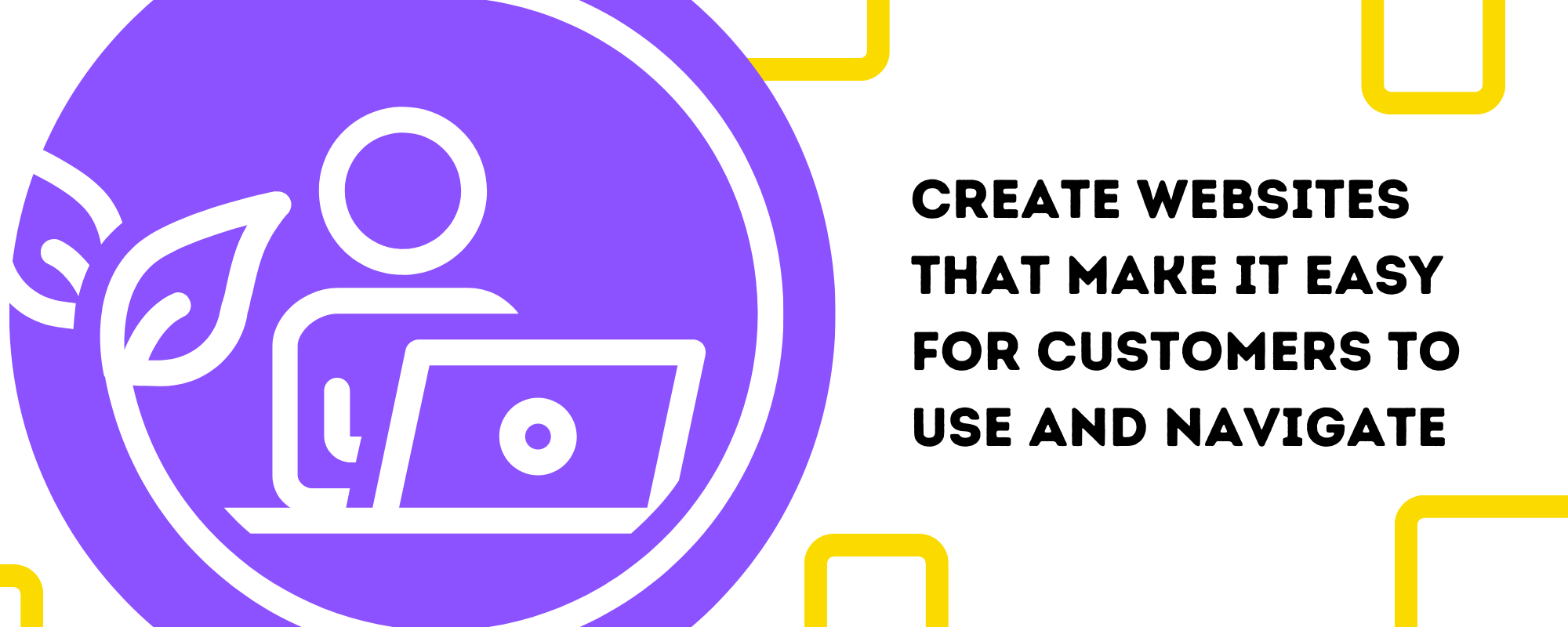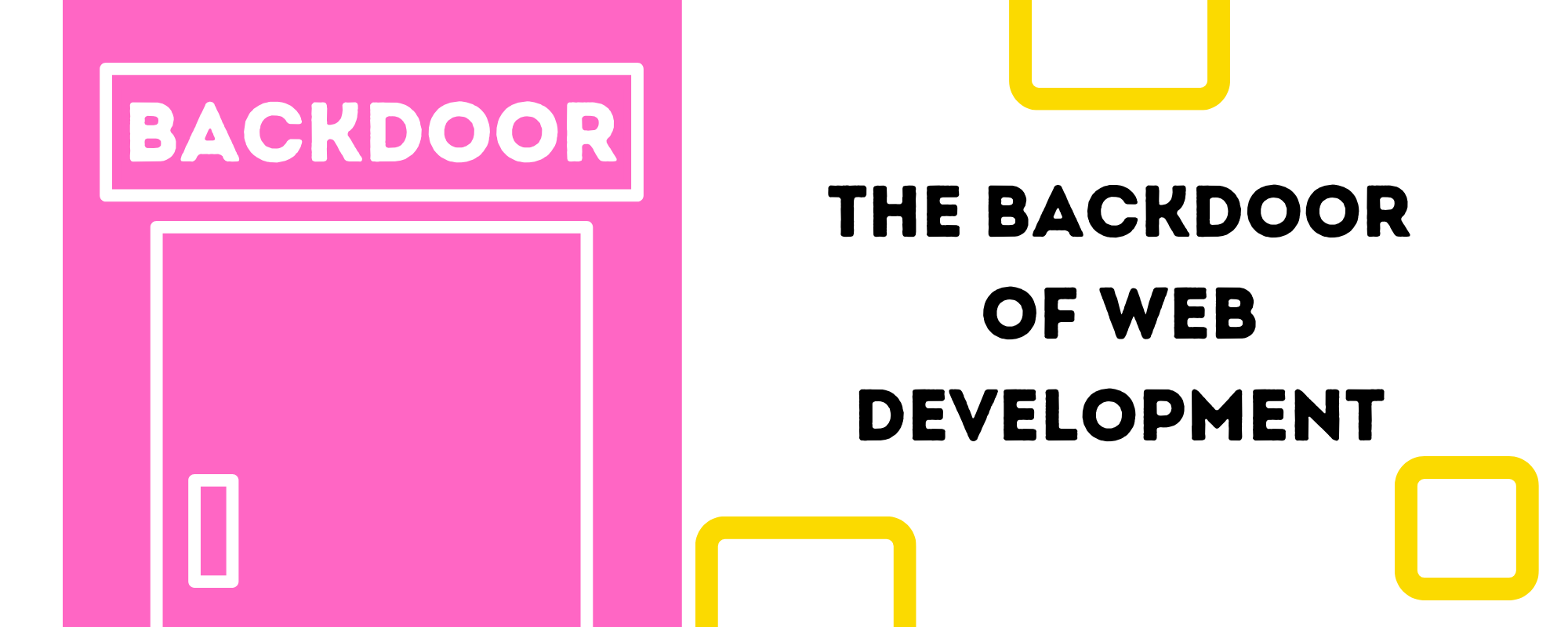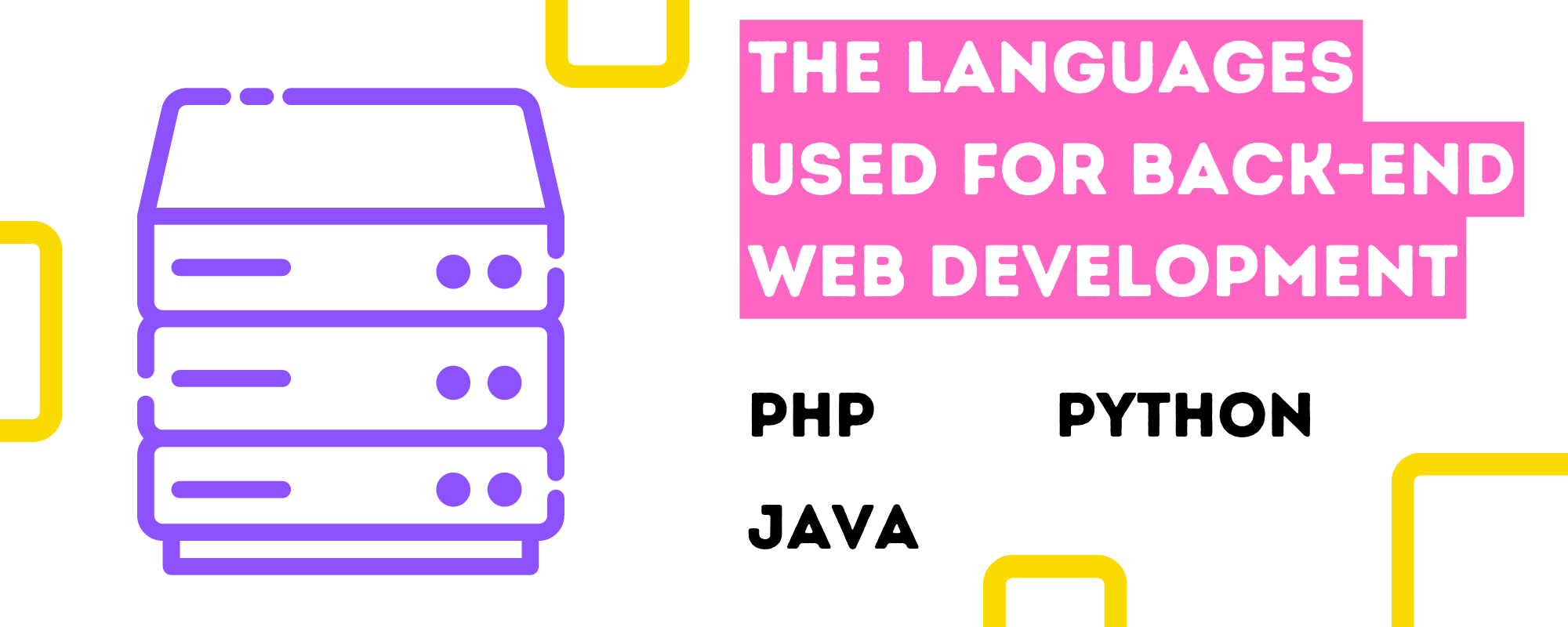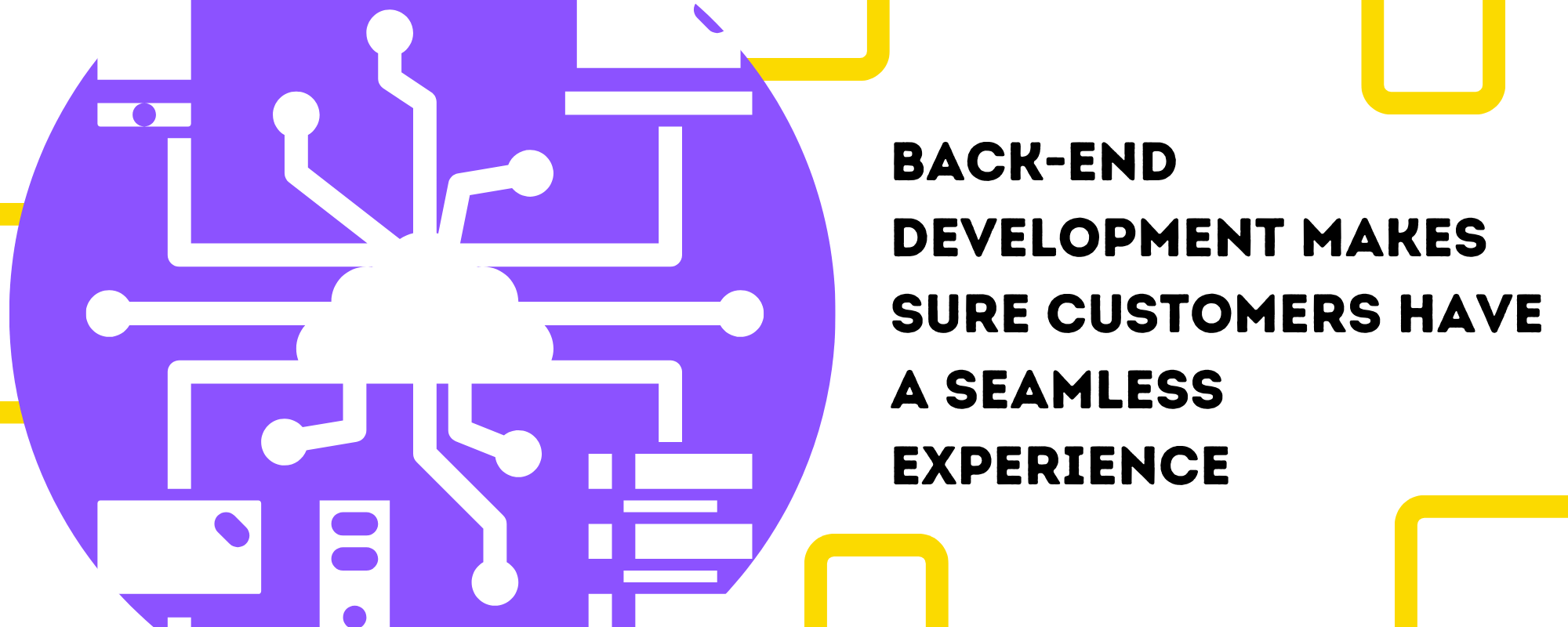Have you ever wondered how your favorite websites manage to function so well and look so great? There is a wonderful interplay going on between front-end and back-end web development in every website.
A website serves as the public face of any company or organization in the modern digital era. For reaching out to potential customers, communicating a brand’s message, and earning income, a well-designed and functional website is crucial.
Yet, creating a website is a challenging process that comprises of many steps and calls for a variety of expertise.
Front-end and back-end development are the two main elements of website development. Back-end development entails constructing the invisible, behind-the-scenes pieces that enable a website to work, whereas front-end development creates the visible, user-interactive portions of a website.
For a website to be functional and user-friendly as well as visually appealing, front-end and back-end development are essential.
But what distinguishes them from one another? Understanding front-end and back-end web development can help you make wise choices about creating and maintaining your online presence, whether you’re a business owner, developer, or just an inquisitive internet user.
Front-End Web Development
Front-end web development is the process of developing and implementing a website or online application’s User Interface (UI) and User Experience (UX) utilizing front-end technologies like HTML, CSS, and JavaScript.
The primary objective of front-end development is to make sure that the website or online application is aesthetically pleasing, user-friendly, and easy to navigate. Our clients usually ask us to update old websites, if not build new ones.
This involves creating and putting into use a number of user interface elements, including menus, buttons, forms, and other interactive elements.
Front-end developers also ensure that the website or web application is responsive and can be seen on many platforms including PCs, tablets, and mobile phones.
Building blocks of front-end web development
- HTML: The set of markup symbols or codes entered into a file intended for display on the Internet is known as HyperText Markup Language (HTML). The markup instructs web browsers on how to display the text and pictures on a web page.Although many people also refer to it as a tag, each individual piece of markup code (which would fall between “” and “>”) is known as an element. There are some elements that appear in pairs, indicating the start and end of a visual effect.HTML’s basic building blocks are a collection of short codes entered into a text file. The capabilities of HTML are powered by these tags.A web browser is used to see the text after it has been saved as an HTML file. The browser reads the file and converts the text into a viewable form, as specified by the author’s code.To build the author’s vision, HTML tags must be used correctly.
- CSS: Cascading Style Sheets, or CSS for short, is an easy-to-use design language created to make it quicker and easier to present web pages.The visual aspect of a website is handled by CSS. With CSS, you can alter the text’s color, font style, spacing between paragraphs, column size and layout, background pictures or colors, layout designs, differences in display for various devices and screen sizes, as well as a number of other effects.The display of an HTML document can be powerfully controlled with CSS, despite its simplicity of learning and comprehension. CSS is most frequently used in conjunction with HTML or XHTML as markup languages.
- JavaScript: A scripting language largely used on the Web is called Javascript (JS). HTML code frequently contains it incorporated in it, which is used to improve HTML pages.JavaScript is an interpreted programming language, thus, it doesn’t need to be assembled. It also renders web pages in a dynamic and interactive way.As a result, the pages can respond to events, display special effects, accept variable text, validate data, create cookies, and recognize a user’s browser, among other things.
- jQuery: jQuery is a JavaScript library designed to make manipulation, HTML DOM tree traversal, event handling, CSS animation, and Ajax easier. It uses the liberal MIT License and is free, open-source software.jQuery is a JavaScript library created by John Resig in 2006 to make it easier for web developers to use JavaScript. It works alongside JavaScript and is not a distinct programming language.Composing code can be exhausting, especially when numerous strings are included. jQuery ties together several lines of code into a single function, so there is no need to rewrite huge blocks of code to complete a single operation.
Importance of front-end web development in creating a user-friendly website
The website design (vision, look, feel, and personality of the site) and the back-end development are two key areas that the front-end connects (the working pieces, content, management areas, and dynamically-driven data of the site).
The process of designing and managing a user’s experience begins with front-end development. By bringing the design together and bridging the link between the backend data, it constructs the building blocks that govern how a user feels about the material they are reading or the actions they are taking on a site.
A well-designed front-end makes websites less complicated for users by making technology intuitive and simple to use.
Back-End Web Development
Back end development, often known as “server-side” development, is the process of creating all of the internal workings of a website or application that are invisible to the user.
To fulfill user requests, data is gathered from external servers and applications and filtered back into the website.
While making an online purchase, you submit your information on the website. That information will then be kept in a database that was generated on a server and will be processed to purchase your item.
These phases make up the backend development process.
An application, server, and database often make up the back-end. When you use a website and enter data, that data is saved in a database that is located on a server. The results are then supplied to you as front-end code for display on the site.
Languages used in back-end web development
- PHP: PHP is an open-source scripting language and interpreter that is mostly used on Linux Web servers. The acronym PHP, which was initially short for Personal Home Page Tools, is now known as PHP: Hypertext Preprocessor.JavaScript, a comparable option, runs on the client whereas PHP runs on the server. PHP is an alternative to Microsoft’s Active Server Page (ASP) technology.The PHP script is integrated into the HTML of a Web page, just like ASP. The Web server calls PHP to interpret and carry out the tasks specified in the PHP script before the page is sent to a user who has requested it.
- Python: Python is an interpreted, object-oriented, high-level, dynamically semantic programming language. It is particularly desirable for Rapid Application Development as well as for usage as a scripting or glue language to tie existing components together due to its high-level built-in data structures, dynamic typing, and dynamic binding.Python’s straightforward syntax prioritizes readability and makes it simple to learn, which lowers the cost of program maintenance. It also allows packages and modules, which promotes the modularity and reuse of code in programs.On all popular platforms, the Python interpreter and the comprehensive standard library are freely available for distribution and available in source or binary form.
- Java: Java is a programming language that may be used to create software that is compatible with a wide range of operating systems.It is a two-stage programming language, which means that it has both an interpreted and a compiled version.The fact that it does not directly compile to an executable file sets it apart from the majority of other compiled languages.
Importance of back-end web development in creating a functional website
A working website that can provide a seamless user experience must be developed from the back end.
The management of data, logic, and interactions with external services or databases is the responsibility of the back-end. Without effective back-end development, the website may not be able to fulfill basic operations such as processing user requests, managing data, and providing personalized experiences.
The back-end is also in charge of assuring the performance and security of the website. Cross-site scripting (XSS), SQL injection, and other security flaws can all be avoided with a carefully thought-out back-end architecture.
Scalability, which is important as traffic increases, is another factor determined by the back-end of the website. The website can break without a scalable back-end, losing users’ trust and revenue.
Differences and Collaboration Between Front-End and Back-End
Front-end and back-end development are necessary for every website. The visual elements of a website—the component that users can see and interact with—are the focus of front-end development.
The system, data, logic, and structure of a website are all part of the back-end development. Websites that are interactive and aesthetically beautiful are made using both front-end and back-end programming.
Differences between front-end and back-end web development
[wptb id=7515]
How front-end and back-end web development work together to create a website
The client-side, commonly referred to as the front-end, of a website is designed and developed during front-end web development.
This involves creating the user interface, putting design components like color schemes, typography, and layouts into use, and making sure the website is responsive and usable on a variety of devices.
To create the website’s client-side code, front-end developers frequently employ HTML, CSS, and JavaScript. They concentrate on enhancing user experience and making the website simple to use.
On the other hand, the server-side of a website, which manages data, logic, and interactions with outside services or databases, is designed and developed in the back end of a website.
This involves the creation of APIs, the development of server-side apps, the management of data and user authentication, and the optimization of the website’s performance and security.
While creating the server-side of a website, back-end developers frequently employ languages like Java, Python, or PHP. They put a lot of effort into making sure the website is safe, scalable, and data-handling-capable.
Why Outsource Front-End and Back-End Web Development?
A thriving business without an internet presence and strong intranet systems will be difficult to find in today’s increasingly digital environment. Modern companies are looking at creative software solutions to drive corporate success, whether it be a basic website or a large online application.
Not every startup needs their own web developer or team. But that doesn’t mean they should settle for DIY websites without the expert hand of developers, both for the smooth feel on the front-end and the security and function from the back-end.
[wptb id=7517]
Outsourcing can offer access to specialized expertise, scalability, and cost savings while in-house development offers more control and perhaps better quality assurance.
Businesses should carefully weigh their options and take into account aspects like cost, expertise, time and resource commitment, scalability, quality assurance, communication and collaboration, and security before making a choice.
Conclusion
For companies of all sizes, choosing to outsource front-end and/or back-end web development can be a wise strategic choice.
To achieve successful collaboration, businesses should set up clear communication channels, specify project scope and dates, and closely monitor progress with their chosen outsourced web dev team.
In the long run, outsourcing web development can assist businesses in streamlining processes, enhancing their online presence, and gaining a competitive edge in today’s hectic business environment.










